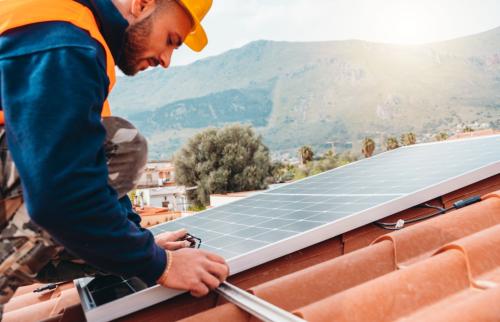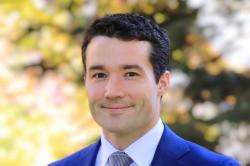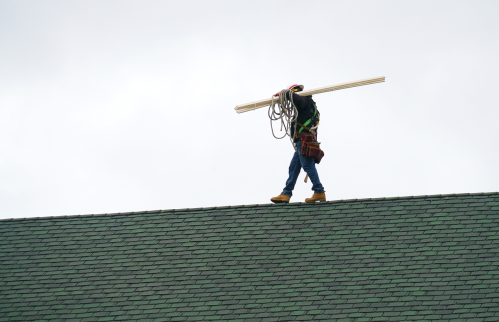The clean energy transition has quietly pushed ahead in recent decades, with solar and wind energy accounting for almost 15% of total U.S. energy production in February 2024. The benefits of this transition on climate change have been celebrated, but less acknowledged have been the potential economic benefits. In a new paper, “The economic impacts of clean power,” Costas Arkolakis and Conor Walsh explain how cheaper electricity resulting from this transition could lead to a 2-3% increase in national wages. On this episode of the Brookings Podcast on Economic Activity, Walsh discusses his research with Sanjay Patnaik, director of Brookings’s Center on Regulation and Markets.
- Listen to the Brookings Podcast on Economic Activity on Apple, Spotify, YouTube, or wherever you like to get podcasts.
- Learn about other Brookings podcasts from the Brookings Podcast Network.
- Sign up for the podcasts newsletter for occasional updates on featured episodes and new shows.
- Send feedback email to [email protected].
Transcript
[music]
EBERLY: I’m Jan Eberly, the James R. And Helen D. Russell Professor of Finance at Northwestern University.
STEINSSON: And I’m Jón Steinsson, Chancellor’s Professor of Economics at the University of California, Berkeley.
EBERLY: We’re the coeditors of the Brookings Papers on Economic Activity, a semiannual academic conference and journal that pairs rigorous research with real time policy analysis to address the most urgent economic challenges of the day.
STEINSSON: And this is the Brookings Podcast on Economic Activity, where we share conversations with leading economists on the research they do and how it will affect economic policy.
EBERLY: With the global transition to clean power already underway, many policymakers and researchers have celebrated the potential for positive environmental impacts. But less celebrated—and less understood—are the positive economic impacts of a grid running on clean power. That’s the subject of a new paper, “The Economic Impacts of Clean Power,” by Costas Arkolakis of Yale University and Conor Walsh of Columbia Business School. Conor joins Sanjay Patnaik, director of Brookings’ Center on Regulation and Markets, to discuss the new research.
STEINSSON: It is really amazing to me how widely views differ when it comes to our prospects relating to climate change. A lot of people are very pessimistic, both about the likely path of emissions, and also about the likely sacrifices needed to bring about the needed change. Others on the other hand are much more optimistic. The optimists tend to point to very rapid technical change in the renewables sector, and some go so far as to predict that we might be on the verge of a future of abundant, very cheap energy.
Costas and Conor are more on the optimistic side of this debate, and their present paper is trying to draw out some of the macroeconomic implications of a future where electricity prices may fall quite a bit, especially in very windy and sunny parts of the country.
EBERLY: The authors also push forward in thinking about climate change and energy policy as a macroeconomic issue. Their approach takes into account spatial variation across the country, as you mentioned, but also examines the potential aggregate implications for economic growth over the longer term.
Now let’s turn it over to Sanjay.
PATNAIK: Thanks a lot, Jan and Jón. It is great to have the opportunity to discuss this fascinating paper on the economic impacts of clean energy. It is my pleasure to welcome Conor to the podcast. Thanks for joining me.
WALSH: No, thanks for having me.
PATNAIK: So, let’s dive right into the findings of your paper. There has been a significant increase in green electrical generation in the last 15 years. Solar and wind produce about 14% of electricity in the United States in February 2024, up from about 2% in 2010. Before we get to the impacts, can you talk about what caused that increase? Better technology, specific policies, market forces?
[3:12]
WALSH: It’s really a combination of factors. Renewables have been supported in the U.S. for quite some time with things like production tax credits. But the real thing that’s changed in the last decade has been dramatic declines in the capital costs of clean energy, in particular solar panels and wind turbines. We’ve seen them come down very fast, not just in the U.S. but internationally. Solar is particularly fast. It’s falling something like 15% a year worldwide. And so, this is just driving huge opportunities for uptake of these technologies to supply the grid.
PATNAIK: And so, you note in your paper that a lot of attention that this change has got is because of the environmental impacts. Lower fossil fuel use means lower greenhouse gas emissions, which is obviously important in the fight against climate change. Your study focuses on another important aspect of this transition, which are the economic impacts. Can you walk me through what economic impacts that your model shows?
[4:07]
WALSH: Yeah, it’s something we think that gets a little underappreciated about renewable energy is that it puts significant downward pressure on wholesale prices across the grid. And the reason is it basically has very low or even zero input costs. You don’t really need fuel for renewable energy. You put a solar panel in the sunshine, you put a wind turbine in the wind, it generates electricity with very low variable costs.
And what this means is that when renewable energy projects bid in to supply into the grid, they’re usually the lowest cost suppliers when they’re available. And this means that whenever they’re available, market clearing prices for electricity tend to fall the more renewables you have on the grid.
So, the really dominant force determining the cost of power of renewable supply is those upfront capital costs, the costs of the wind turbines, the cost of the solar panels, the cost of construction, and what we call balance of system costs as well. And so, as these technologies become cheaper it very naturally puts downward pressure on wholesale prices across the U.S.
And we’re starting to see this in locations that have already high penetrations of renewables. So, there’s a lot of wind power in the middle of the country, very windy places like North Dakota. There’s a lot of solar panels coming online in California, in Texas. And in these places, in the middle of the day when sunshine is very abundant, we see very, very low wholesale power prices, even negative in some places. So, the more of the stuff that comes online, we expect it to push down electricity prices across the U.S.
And so, we’ve been thinking a lot about what the economic impacts of these price falls are going to be. And we develop a relatively general model of production where we think through the price impact of cheaper electricity prices onto production wages and growth in general.
PATNAIK: This is actually very interesting, and I think often very underappreciated. So, can you tell me a bit more about the underlying model that you developed to make these projections? Are there any aspects where you are less certain about the predictions and the assumptions you made?
[6:12]
WALSH: Yeah. So, it’s a relatively flexible model. It’s in a class of models we call quantitative spatial models. I think the basic idea of the results we write down is the impact of electricity price falls depend rather intuitively on how intensively electricity is used in production in a certain place and in a certain industry. So, for example, there are some industries that are extremely energy intensive. Aluminum smelting is one. Aluminum smelting generally spends almost as much on electricity as they do on direct labor costs. And so, places where you have very energy intensive industries interacted with places that have good renewable resources are going to be the places that benefit the most from these changing power costs.
So, the model kind of gets at that intuition. It’s very what we would call a first order result, as in we we’re only thinking about local power price changes. It’s not a great model for thinking about how electricity causes reallocation of industry across the U.S. So, a good example might be cheap power in places like Arizona and Nevada could cause manufacturing to locate there in the future. Right now, there’s a lot of manufacturing in the old Rust Belt of the U.S. and in the southeast of the country, but not a lot in Arizona and New Mexico.
Once you get very, very cheap electricity, that creates incentives for businesses to move across space. And one limitation of the model we write down is explicitly ignoring this kind of reallocation of long-run economic activity. We’re really only thinking about the short-run impacts of cheaper power on the wages and production.
PATNAIK: That’s actually really interesting. One thing that I’d like to bring up is you mentioned in your paper that your model shows that electricity costs will fall by 20 to 80%, depending on local solar resources, and could lead to a 2 to 3% aggregate real wage increase. One aspect of this that I’m curious about is how realistic are those estimates? If you think about demand for electricity, if demand for electricity goes up, for instance, due to the growth of AI data centers, which we have seen across the country, and also the drive to decarbonize and electrify our economy, if we have that increased demand for electricity and it’s not matched by an increased supply, for instance, because of permitting issues, there would be pressure for prices to rise. How does your model account for this?
[8:33]
WALSH: Absolutely. I mean, the focus of the model is primarily a supply-driven model, as in we make an assumption that at least in the medium- to long-run, solar and wind will be able to enter in places where there are relatively high costs. So, at the moment, that is a big issue. So, permitting is maybe the main issue facing the electricity industry at the moment. On average, it takes anywhere up to five years to connect a solar project at the moment to the grid because of many things, because of interconnection costs, because of studies of reliability that have to be done, and all the entry of new renewable energy projects is sort of congesting other projects that are trying to enter at this time.
So, at the moment this has been a significant issue that it’s hard to get interconnection into the grid, but we see this as mainly a transitional issue in the long run as these barriers start to fall, we think that the cost side will dominate on this on this question. So, just the idea that you mentioned about AI and data centers increasing demand for power, we think that’s right. We think there will be substantial electrification of industry and substantial increases in demand from these new technologies.
The argument that we make is that in the medium- to long-run, anywhere on the grid that prices rise above the level that would justify solar investment backed by storage. So, firms’ solar investment, you should see solar entry. And what that does, that tends to place a ceiling on the price increases that we should see that’s kind of independent of demand. The real assumption, though, that you’ve hit the nail on the head there is the relative ease of entry. Is it easy to, in the medium- to long-run, create solar power projects and wind projects?
I think one key concern that people bring up a lot is the availability of land. And for wind power in particular this may be an issue in the future. We don’t see it being a huge issue for solar, though. In the paper, we go into detail on this. The National Renewable Energy Laboratory provides great estimates out there of how much developable solar power there is, as in what’s the potential land we could use for solar power.
I’ll just give you a figure off the top of my head. You could meet almost all of current U.S. demand with less than 2% of the developable solar power out there, which is about 0.6% of the U.S. land on the on the continental United States. Now, 0.6% sounds like a lot of land, but at the same time, that’s about five times the land we use for golf courses. So, you know, it’s large, but it’s not that large considering the things that we do with that land.
PATNAIK: I guess one of the issues there would be that the land would be in one part of the U.S. where there’s more sunshine and then it would be hard to transmit all the electricity to our population centers. Have you guys accounted for that?
[11:19]
WALSH: Absolutely, yes. So, transmission is a key issue that we’ve been working on in this and in other papers. Transmission costs are very heterogeneous across the U.S. So, there are estimates out there that transmission costs are fairly low in the middle of the country. But connecting and building new high voltage transmission lines, very expensive in places like California and New England. New England in particular, or at least the northeast of the U.S., very heavy loads center, and there’s just not a lot of transmission capacity going from the northeast to the very sunny areas of the country. So, we see huge opportunities for building out this transmission infrastructure.
And in the paper, we size some of the gains on offer. We use something very simple. We say, suppose everywhere in the U.S. had access to the lowest solar power costs—basically the places that are the sunniest like Arizona—what would that do to aggregate wage gains? And we see big increases in wage gains from sort of building out transmission infrastructure. So, we think this is a big prize on the order of or the maximum gain we calculate you could get out of building out transmission infrastructure, it’s about $300 billion a year. So, transmission infrastructure is expensive, but those kind of aggregate gains are very, very large. And so, we think the prize here is quite substantial.
PATNAIK: I think that’s a really interesting angle to it because … so, we have done some work on permitting even at my center at Brookings and when we look at permitting reform, the potential impact and positive impact on real wages that could come from this infrastructure is not something that people talk about often. So, I love that. I think that’s a really important finding.
[12:58]
WALSH: It’s one of these indirect benefits that often don’t come up, especially when you’re talking about electricity market. Analyses tend to be very local and industry specific. But electricity is such an important input into production that it’s going to have all kinds of macroeconomic effects to make this input cheaper. And we think getting at those effects is something really important to do.
PATNAIK: And so, I think that brings me also to kind of like my final question. When we look at the economic impact of the green energy transition, this is not something a lot of policymakers really talk about in detail. Do you think they should? What are the effects? Just too uncertain that it’s hard to try to convey these effects to the public.
[13:38]
WALSH: No, I think one of the great benefits of this transition is that it’s almost a free lunch, as in it’s going to clean up the environment. We’re going to see much lower CO2 emissions from particularly the power sector. And at the same time, we’re going to get cheaper power. So, anything that speeds up this transition, such as the Biden administration’s Inflation Reduction Act with their production tax credits and investment tax credits, it’s almost a free lunch.
Now, changes in these policies that we might see from the new administration, it’s still too early to tell what’s going to happen there. But the clean energy juggernaut I think at this point is unstoppable. These things are getting so cheap, and they’re being installed so rapidly, not just in the U.S. but across the globe. I think there’s very little room for policy to derail the transition. Policy could slow down the transition, but I think we’re moving very quickly in a world that’s dominated by renewables.
PATNAIK: And just to follow up on that, how do you see the issue of baseload power with renewables that are a bit more intermittent, especially when we look at night, for instance, with solar power plants? So, how do you solve that problem?
[14:44]
WALSH: So, there’s two dimensions to intermittency that I think are very important. First is the daily intermittency of solar panels. As you mentioned, there’s no power there at night. I think we’re quickly getting to the place where lithium ion solves this problem. So, we do cost estimates in this paper that if you add eight hours of lithium-ion storage to a solar plant, it effectively makes all the hours of sunlight during the day completely dispatchable. So, any solar plant can store all their energy and dispatch it at the times of highest demand.
We’ll get significant overbuilding because, of course, there’s only eight hours, roughly or even less of sunlight that you can capture a day. So, you need more solar plants to supply during the night and during the early morning, let’s say. But lithium-ion batteries have reached the price point where they’re starting to solve this daily intermittency problem.
And we’re seeing is already in ERCOT [Electric Reliability Council of Texas] and in CAISO [California Independent System Operator] in California, where we’ve seen just an explosion in battery installations in the last two years. And if you look in California in particular, batteries are already supplying up to 1 to 2 hours of the early evening peak, siphoning off solar power from the day and redirecting that to the evening. We will see that increase from here for sure. So, projections are updated every day of the amount of battery storage that’s getting installed on the grid.
There’s a second intermittency problem, though, that I don’t think lithium ion is that well-suited to solve, and that’s the seasonal intermittency problem. So, there’s much less solar power in the winter. And wind is also variable over kind of weekly and monthly horizons. Now, we just don’t have good storage technology that’s cheap enough at the moment to solve this long-duration storage problem. But I think the capital is getting so cheap now, solar and wind capital, that partially overbuilding our capacity somewhat mitigates this problem.
So, the idea being, well, there’s less sunlight during the winter, overbuild solar capacity. And in the summer either we just waste that electricity because it’s so cheap, it’s free, or we will find a use for it. I mean, wasting the electricity in summer is the worst-case scenario. I’m very confident in the ability of the market to take this price signal of cheap solar power in the summer and do something interesting with it with it, whether that’s convert it into hydrogen, whether that’s variable computing loads, desalination. There are all kinds of things you could think of doing with excess electricity in the summer. But at the moment, this seasonal issue, it is a real issue. But if capital keeps getting cheaper for solar and wind, I think it becomes less of an issue over time just because you overbuild the stuff.
[music]
PATNAIK: Well, thank you so much, Conor, for joining me today. It’s a really fascinating paper and I hope it will have some positive policy impacts.
WALSH: Great. Thanks so much for having me.
STEINSSON: Once again, I’m Jón Steinsson.
EBERLY: And I’m Jan Eberly.
STEINSSON: And this has been the Brookings Podcast on Economic Activity. Thanks to our guests for this great conversation and be sure to subscribe to get notifications about new releases of this podcast.
EBERLY: The Brookings Podcast on Economic Activity is produced by the Brookings Podcast Network. Learn more about this and our other podcasts at Brookings dot edu slash podcasts. Send feedback to podcasts at Brookings dot edu, and find out more about the Brookings Papers on Economic Activity online at Brookings dot edu slash B P E A.
STEINSSON: Thanks to the team that makes this podcast possible, including Kuwilileni Hauwanga, supervising producer; co-producers Fred Dews and Chris Miller; audio engineer, Gastón Reboredo; show art was designed by Katie Merris at Brookings; and promotional support comes from our colleagues in Brookings Communications.
The Brookings Institution is committed to quality, independence, and impact.
We are supported by a diverse array of funders. In line with our values and policies, each Brookings publication represents the sole views of its author(s).









Commentary
PodcastHow will the clean energy transition affect wages?
Listen on
Brookings Podcast on Economic Activity
December 4, 2024